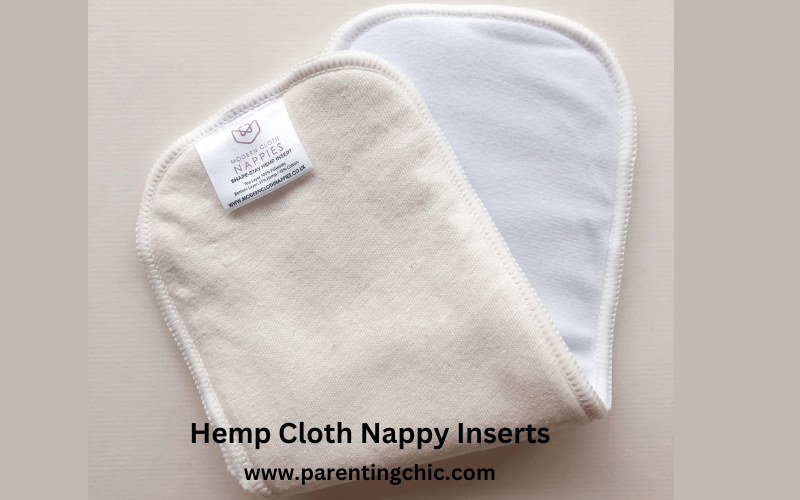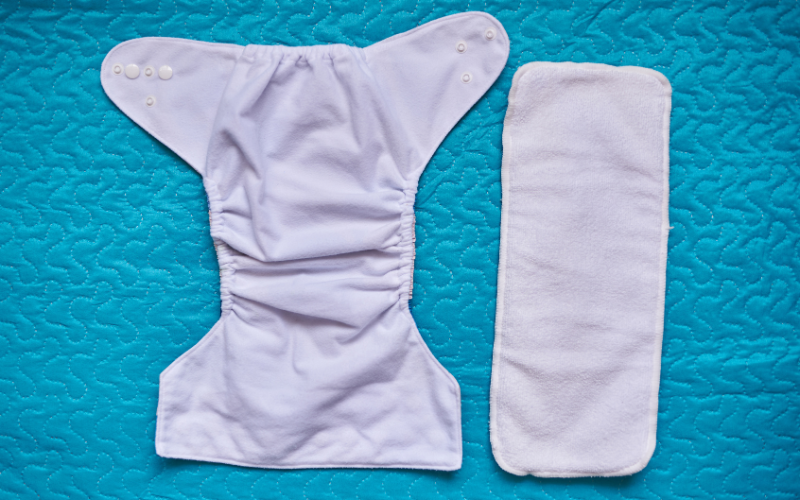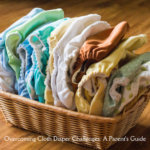With growing concerns about the environment and an increased interest in sustainable living, many parents and guardians are revisiting traditional methods in baby care. Cloth nappies, a once old-fashioned choice, are making a notable comeback. Central to this trend is the importance of cloth nappy inserts, designed to bolster comfort and enhance absorbency. If you’re venturing into the cloth nappy world, this comprehensive guide is tailored for you.
Why Cloth Nappy Inserts?
Before delving into the types, it’s essential to understand why these inserts are crucial. Cloth nappies, on their own, might not always offer the required absorbency, especially during the night or prolonged wear. Inserts provide an added layer of protection, ensuring the baby’s skin remains dry, reducing the risk of rashes and discomfort.

Types of Cloth Nappy Inserts:
Every baby is unique, and their needs can vary. This is where the diverse range of nappy inserts comes in handy, offering customization based on absorbency, drying time, and skin sensitivity.
Microfiber Cloth Nappy Inserts:
Microfiber is a synthetic material that has taken the cloth nappy world by storm. Originally, microfiber was recognized for its application in cleaning, given its ability to attract and hold onto dirt particles. In the context of cloth nappies, this ability to attract and retain has been applied to liquids, making it an exceptionally absorbent option.
Microfiber inserts consist of many tiny fibers, often finer than a strand of silk. These small fibers create a vast surface area that can absorb and lock in moisture rapidly. Due to its synthetic nature, microfiber can absorb liquid several times its weight, which has made it one of the go-to materials for cloth nappy inserts.

However, while microfiber is undeniably absorbent, it’s essential to note some specific characteristics and best-use practices. Let’s delve into the pros and cons:
| Microfiber Cloth Nappy Inserts | |
| Pros | Highly absorbent – can hold multiple times its weight in liquid. Dries faster compared to many natural fibers. Often more affordable than other insert materials. |
| Cons | Can’t be placed directly against baby’s skin as it can cause dryness or irritation. Tends to retain odors if not washed thoroughly. Prone to compression leaks if saturated, meaning liquid can be squeezed out under pressure (e.g., when baby sits). |
When deciding on the right insert for your baby’s nappy, it’s crucial to weigh these pros and cons. While microfiber offers quick absorption, it might be beneficial to pair it with other natural inserts for a well-rounded nappy solution.
Bamboo Cloth Nappy Inserts:
Bamboo, a fast-growing and sustainable plant, has found its way into various textile applications over the years. One of its significant applications in the realm of baby care is in the form of bamboo cloth nappy inserts. These inserts are heralded for their natural origins, softness, and impressive absorbency.
Bamboo fibers are naturally porous, allowing them to soak up moisture effectively. Beyond absorbency, bamboo possesses anti-bacterial and hypoallergenic properties, an attribute that’s invaluable when it comes to baby care. The gentle nature of bamboo makes it particularly suitable for babies with sensitive skin or those prone to rashes.

Furthermore, bamboo’s eco-friendliness is worth noting. As a plant, bamboo requires minimal pesticides or herbicides, and it grows rapidly, ensuring a lesser environmental footprint. This sustainable aspect often appeals to eco-conscious parents.
While bamboo inserts have numerous advantages, they come with a few considerations that parents should be aware of. Here are the pros and cons for a clearer picture:
| Bamboo Cloth Nappy Inserts | |
| Pros | Naturally anti-bacterial and hypoallergenic. Soft and gentle on baby’s skin. Highly absorbent and retains moisture effectively. Environmentally friendly due to bamboo’s rapid growth and minimal resource requirements. |
| Cons | Longer drying time compared to synthetic materials like microfiber. Often comes with a slightly higher price tag compared to other inserts. Can become less soft over time if exposed to hard water or harsh detergents. |
Bamboo cloth nappy inserts stand out as an environmentally-friendly and skin-friendly choice in the cloth diapering journey. As with all baby products, personal preference, specific needs, and individual experiences play a crucial role in determining what works best for each family.
Hemp Cloth Nappy Inserts:
Hemp, a plant that’s been cultivated for thousands of years for various purposes, has found its way into modern baby care in the form of cloth nappy inserts. Derived from the Cannabis Sativa plant (not to be confused with the marijuana variant), hemp textile is produced from the long strands of the plant’s stalk.
When it comes to absorbency, hemp is a heavyweight champion. It might not absorb as quickly as materials like microfiber, but when it comes to holding onto moisture, hemp excels, making it an ideal choice for overnight use or for babies who are heavy wetters.
Apart from its absorbency, hemp is a durable material. It can withstand numerous washes without deteriorating in quality, making it a long-lasting investment. Hemp’s natural composition also lends it anti-microbial properties, an added advantage in a nappy context.

Environmentally, hemp is a sustainable crop. It requires minimal water, and its rapid growth cycle means it consumes a significant amount of CO2, making it a carbon-negative crop. It’s also naturally resistant to many pests, reducing the need for pesticides.
While hemp sounds like the perfect material, it comes with its set of considerations. Here’s a tabulated breakdown:
| Hemp Cloth Nappy Inserts | |
| Pros | Highly absorbent, especially for extended periods. Natural anti-microbial properties. Durable and can stand up to many washes. Environmentally friendly: requires less water and pesticides, and acts as a carbon sink. |
| Cons | Slower to absorb compared to materials like microfiber. Can feel stiffer than other natural fibers, especially if air-dried. Longer drying time. Typically pricier than cotton and some other insert materials. |
Hemp cloth nappy inserts, with their blend of environmental benefits and high absorbency, offer a compelling option for parents invested in cloth diapering. As with all materials, understanding its strengths and weaknesses allows for informed decision-making tailored to individual baby needs.
Cotton Nappy Inserts:
Cotton, one of the world’s oldest and most widely used natural fibers, has been at the heart of baby care for centuries. Revered for its softness, breathability, and natural origins, cotton remains a staple in the realm of cloth nappies and their inserts.
The cotton plant provides fluffy bolls that, once harvested, can be spun into yarn or thread. This yarn is then woven or knitted to produce the cotton fabric we are familiar with. Cotton’s inherent structure allows it to effectively wick moisture away, making it a dependable choice for nappy inserts.
In the world of cloth diapering, cotton inserts are often celebrated for their straightforwardness. They are easy to clean, and their performance is predictable. No fancy care routines are needed, and they tend to get softer and more absorbent with each wash.

While cotton seems like a no-brainer, it’s essential to be aware of its nuances to ensure it aligns with specific requirements. Here are the pros and cons for better clarity:
| Cotton Nappy Inserts | |
| Pros | Natural and gentle on baby’s skin. Predictable absorbency that increases with washes. Easy to clean and maintain. Typically more affordable than some other natural fiber inserts. Breathable, reducing the risk of rashes. |
| Cons | Tends to be bulkier than some other insert materials. Can shrink over time, especially when exposed to high temperatures. Longer drying time compared to synthetic inserts like microfiber. Prone to staining. |
Cotton nappy inserts, with their rich history and straightforward care, have cemented their place in the cloth diapering world. As with any material, understanding its characteristics helps parents make informed choices tailored to their babies’ comfort and their own convenience.
Charcoal Bamboo Nappy Inserts:
In the diverse landscape of cloth diapering, charcoal bamboo inserts emerge as an innovative blend of the natural benefits of bamboo with the added infusion of charcoal. But what exactly is a charcoal bamboo insert?
Charcoal bamboo inserts are typically made from bamboo fibers that have been infused with charcoal, usually derived from bamboo itself. The resulting fabric retains the softness and absorbency of bamboo while the charcoal inclusion provides added benefits in moisture management and odor control.
Charcoal, in general, is known for its purification and absorption capabilities. When infused with bamboo fibers, it not only enhances the material’s absorbency but also offers a natural layer of protection against bacterial growth. This makes charcoal bamboo inserts particularly useful for preventing diaper rashes and keeping the baby’s skin dry.

Moreover, the dark gray color of charcoal bamboo inserts makes them less prone to visible staining, an added advantage for parents concerned about aesthetics.
Despite their advantages, it’s important to understand the complete picture. Here’s a breakdown of the pros and cons:
| Charcoal Bamboo Nappy Inserts | |
| Pros | Naturally anti-bacterial and reduces the risk of diaper rashes. Excellent moisture and odor control due to charcoal infusion. Less prone to visible staining due to their darker color. Retains the softness and absorbency attributes of bamboo. |
| Cons | The presence of charcoal can make these inserts slightly less breathable than pure bamboo. Drying time can be longer than synthetic materials. The charcoal component may fade over numerous washes, slightly diminishing its benefits. Typically costlier than regular bamboo inserts. |
Charcoal bamboo nappy inserts represent a fusion of natural and modern innovations in the world of cloth diapering. Their unique combination of bamboo and charcoal provides a comprehensive solution for parents looking for both functionality and comfort. However, as always, understanding their characteristics in-depth helps in making an informed choice tailored to specific needs.
Usage Guide
Utilizing cloth nappy inserts effectively is paramount for both baby’s comfort and the insert’s longevity.
Select Based on Need:
A new born might not need as high absorbency as an active toddler. Also, consider the duration between nappy changes. If you’re heading out or putting your baby to sleep, opt for higher absorbency options.
Positioning Matters:
Ensure the insert is entirely within the nappy. For boys, place more towards the front, and for girls, position centrally for optimal absorption.
Layering:
For extended durations, like night time, layer multiple inserts. The highly absorbent one (hemp or bamboo) should be at the bottom, with a quicker absorbing one (microfiber) on top.
Safety First:
Always ensure that the insert material is safe against the baby’s skin. If unsure, use a liner as a protective layer.
Cleaning and Maintenance
Cleanliness is next to godliness, especially with cloth nappies. Proper care ensures the inserts remain absorbent and increases their lifespan.
Immediate Action:
Rinse the used inserts promptly. This step is crucial for removing stains and preventing smells.
Storing:
Store used inserts in a dry pail with holes, allowing for air circulation. Avoid leaving them damp for prolonged periods to prevent mold growth.
Washing:
Wash the inserts every 2-3 days. Begin with a cold pre-rinse cycle, followed by a regular warm wash with cloth-friendly detergent.
Drying:
Sun drying is best, as it acts as a natural bleaching agent for stains. However, if using a dryer, ensure it’s on a gentle cycle to prevent wear and tear.
Regular Stripping:
Over time, residues from detergents or minerals from water can accumulate on the inserts, reducing their absorbency. Stripping them every couple of months can help. This involves washing them in hot water with a mix of detergent, washing soda, and borax, followed by multiple rinses.
In Conclusion
Venturing into the world of cloth nappies and inserts can seem daunting, but with knowledge and routine care, it’s a sustainable and comfortable choice for your little one. Your efforts not only ensure your baby’s comfort but also contribute to a more sustainable future.







